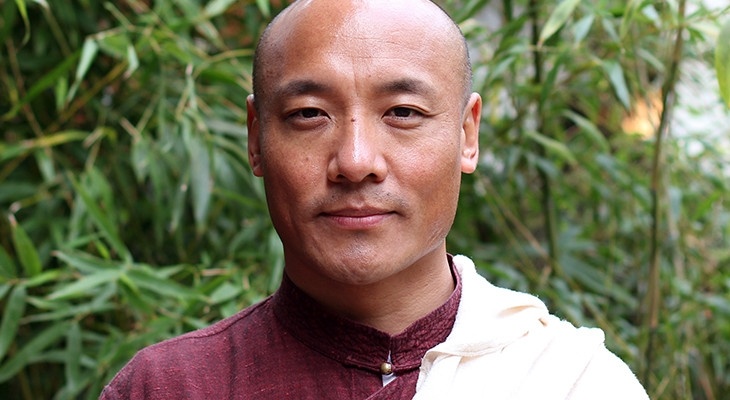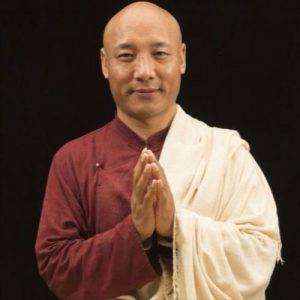
It is important to ask questions of ourselves, such as is it enough to only practice meditation or sadhana on the cushion? Are we becoming self-indulging Dharma junkies unless we go out and take concrete action, caring for the poor or fighting for justice on the behalf of the weak? Since altruistic actions are an integral part of our spiritual practice, we should aspire to engage with the world and become involved in social or political issues. This can be regarded as the way of the bodhisattva.
As Dharma practitioners, we should seek to help others by cultivating compassion and love in action, and also by trying to change the world or our society for the better. The world needs help from each of us. We might regard ourselves as ordinary and think that we cannot do anything for humanity. The usual voice of inner resistance is this thought: “Oh, I’m just one person. The world is too big.” The truth is that every human is powerful in his or her own way. We have the power to bring about huge change in the world without needing to be a politician, a celebrity, or a spiritual leader. Every voice you put out, every action you take is never in vain; it becomes part of this cumulative force that can tilt a whole society in a new direction.
On my recent trip to Malaysia, after a long period of sitting meditation that lasted a week, one of our sangha members arranged for our group to take a trip to a refugee center that hosts many children who have fled from Myanmar. We offered them food and spent time with them. Some people from our sangha offered performances, from tantric dance to pop music dance. We all laughed and ate together, and there was this underlying sense that we are the same, human beings, and that we are all refugees. There was joy in many of our friends feeling that we were doing something that was not simply for ourselves. Our human heart is naturally big and compassionate, expressing bodhicitta, the enlightened heart. At the moment when its true desire is fulfilled, there is an authentic joy and egoless bliss.
Let us imagine that our Dharma practice is like a great eagle. She needs two wings in order to fly. Both wings are equally essential; she would be unable to fly if she were missing one wing. One wing can be regarded as the practice of sadhana, meditation, reflection, and the study of the scriptures. Then, the other will be altruistic deeds that involve giving, helping others, and loving-kindness in action. This wing also includes trying to change the world through involvement in political, environmental, or social issues. This practice is what we call engaged Buddhism.
Social justice is perhaps the most important factor in bringing about prosperity, happiness, and dignity to every human being. It does not come into being as a miracle or a big gift from heaven above. We have to work hard to earn it. We can see in places where there is little or no social justice, there is more poverty, inequality, and violence. As a resident of the United States, I see that there is much social injustice even though the country is regarded as a global super power, a beacon of democracy, a steward of scientific knowledge, and the country with the highest level of food security on the whole planet. By now, I know this country better than any other place I have been since my birth.

It is very hard to see that there is such all-pervasive social injustice when you live in a sheltered environment. It is easy to assume that the whole world is like our own community. Generally speaking, the majority of American Buddhists are either well-to-do East Asians, or educated middle- and upper-class white folks. It is therefore easy for American Buddhists to indulge in a delirium of imaginative cozy Nirvana while so many of the disenfranchised population is experiencing a very different reality. However, a number of encouraging signs are showing up on the horizon. Many American Buddhists feel that they have to do whatever they can to create a more enlightened, or at least sane, society. They realize that sitting on a meditation cushion alone will not change the world and can even be a form of escapism when there is an underlying ulterior motive to feel good or seek enlightenment for oneself.
In Asian societies, images of bodhisattvas are commonplace and are well loved. Yet I wonder if, besides building these giant statues of Bodhisattvas, how many Buddhists are trying to emulate these bodhisattvas, much as they love those sacred ideals. The enormously tall statues of Guanyin are still vivid in my memory from my recent trip there. As Asia prospers, there is not shortage of patronage to keep building the “tallest” and “grandest” statues. This might be a very important time for Buddhists to learn the way of the bodhisattvas in its truest sense.
See more
Related features from Buddhistdoor Global
Anam Thubten Rinpoche On Non-attachment, Being a Buddhist Gypsy, and Impermanence














